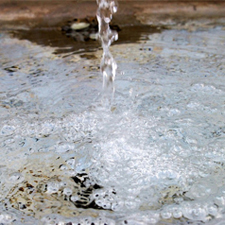Evaluating water conservation policy in California
Summary:
During the most recent drought, California required urban water districts to aim to conserve 20 percent of their water resources, compared to a 2013 baseline. While some districts were very successful, saving up to 50 percent, others failed to meet the target. What explains variation in California urban water district’s water conservation success? The goal of this project was to examine how variation in policy—pricing, messaging, penalties—and drought severity affected water conservation across districts. The analysis involved 1) comparing across water districts to explain the relationship between policy variation and water conservation success and 2) looking within districts to examine how policy changes over time in a given district can explained conservation change in that district.
Investigator:
Leah Stokes
Assistant Professor, Department of Political Science
University of California, Santa Barbara
Project description:
California has experienced a record drought that has lasted over five years. In April 2014, Governor Jerry Brown issued an executive order calling on urban water districts to reduce consumption by 20 percent over 2013 levels. In the intervening months, water districts reported their use to the State Water Resources Control Board, which publishes monthly water conservation results. Some districts’ efforts proved very successful, with savings over 50 percent, while others only managed 5 percent.
Rather than requiring specific policies and strategies to save water, California took a decentralized approach, with different districts adopting varying conservation strategies. Water districts have a number of tools at their disposal to influence residential water consumption. Yet, we have very little information on which strategies worked best to change behavior and increase water conservation across California’s districts.
What explains variation in California’s urban water districts’ ability to conserve water? In this project, I evaluated the effectiveness of a number of strategies: pricing, messaging, and penalties. For example, significant psychology and public policy research suggests that simple information messaging may fail to change behavior, while social norms messaging can be very effective. I examined how water districts communicated with customers, whether they provided information on the drought or water conservation strategies, and whether and when districts started providing personalized feedback information or social comparison information.
The results of this project can inform water conservation approaches. If some water districts are proving more successful at creating behavior change, we need to understand why, so that state policy can encourage other districts to adopt a similar approach.

